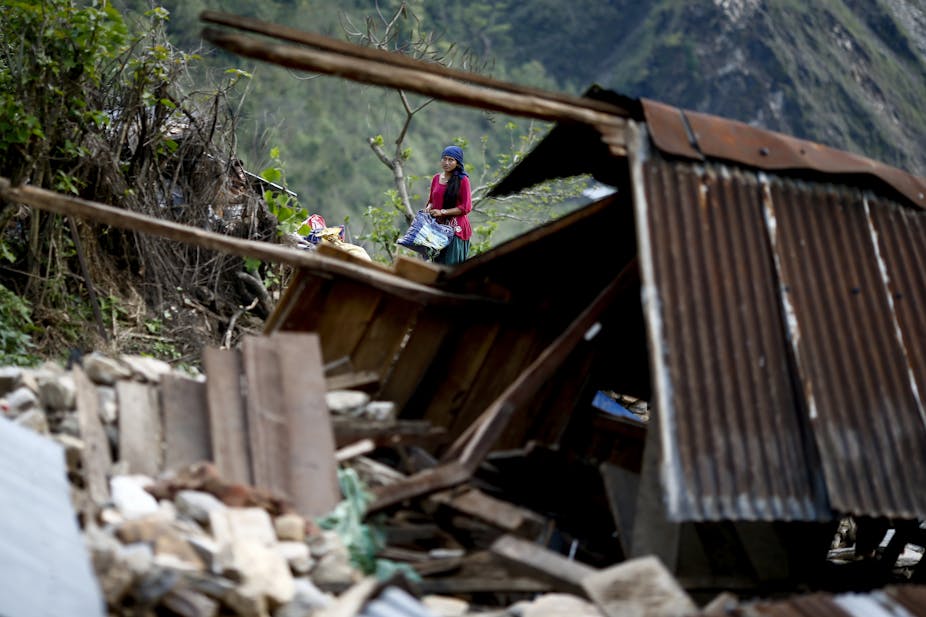When a 9.0 magnitude earthquake hit Japan in March 2011, I was on the 9th floor of a 20-storey Tokyo hotel. The quake was one of the five most powerful since modern record keeping began in 1900, and it lasted for around three minutes – an unusually long time.
Countless lives were saved by Japanese engineering. The tsunami that followed – and the resulting Fukushima meltdown – was a terrible tragedy, but the earthquake itself could also have caused far greater loss of life. It actually did very little damage relative to its magnitude.
The fact that buildings like the one I was in, and thousands of others, remained intact shows just how important good earthquake engineering is.
In Nepal, which was recently struck by a 7.8 magnitude earthquake, the problem is quite different. A combination of poverty, a lack of specialised knowledge and poor regulation mean most houses were never built to such standards in the first place. Therefore it is these houses that retrofitting efforts – and my research in the country – must focus on.
As recent events have reminded us, it is collapsing structures that kill people during earthquakes and rarely the shaking itself. Engineers, through intensive and persistent analysis of past earthquakes have mastered the art of building houses to resist shaking and to avoid collapse.
However, such earthquake-resistant buildings are expensive and need specialised knowledge and skills – it’s not something any old builder/architect combo can knock out overnight. There are specialised MSc courses and even doctorates in the subject – and engineers need continuous professional development to keep pace with the latest research. Japan has these skills and resources in abundance; a poorer nation such as Nepal, not so much.

Houses in Nepal are built with traditional knowledge and often without any engineer’s visit – the technical term is non-engineered buildings – and it is difficult to make them withstand earthquakes of large magnitude.
In such scenarios, it is often prudent to rein in expectations and aim for the “least bad” outcome by increasing the time it takes for the house to collapse. If, instead of two seconds, the building collapses in 12 seconds it may give the occupants enough time to escape.
The collapse of non-engineered masonry buildings is one of the greatest causes of casualties in major earthquakes around the world. Yet by definition these non-engineered structures remain largely outside of the scope of modern engineering research, focused as it is on new technologies and new buildings – fancy new quake-proof skyscrapers command significantly more funding than the unglamourous task of seismic retrofitting. This means that the majority of those at risk often remain so.
Even where research is focused on non-engineered housing, there are still significant social and economic challenges before implementation. It’s all very well asking people in Tokyo to pay a premium for seismic proofing, but Nepal’s gross national income per capita is US$730 – just two dollars a day.
My research is aimed at developing retrofitting techniques which will prevent or prolong the collapse of adobe (mud brick) houses in strong earthquakes. We used common plastic packaging straps to form a mesh, which is then used to encase structural walls.

Tests showed that the proposed technique effectively prevents brittle masonry collapse and the loss of debris. We then trained rural masons in Nepal, gave a public “shake-table” demonstration and retrofitted a real house.

This implementation project proved effective at reaching rural communities but highlighted the fact that government subsidies are still required to give low-income people the incentive to safeguard their homes against the next big earthquake.

